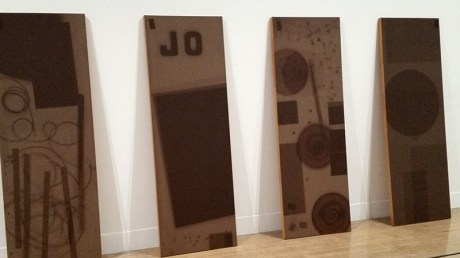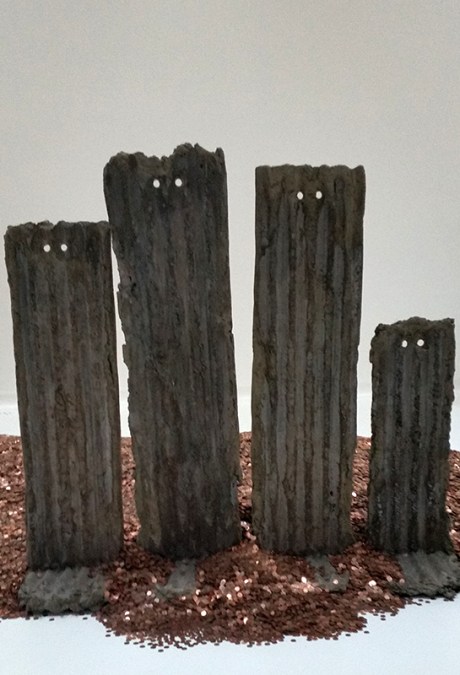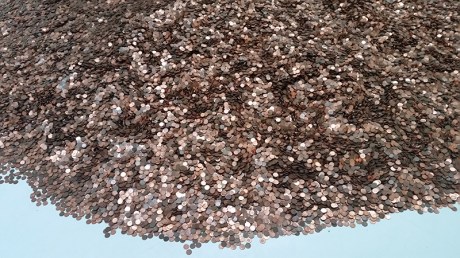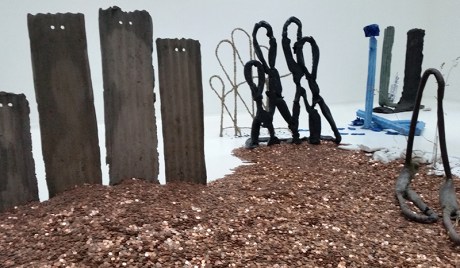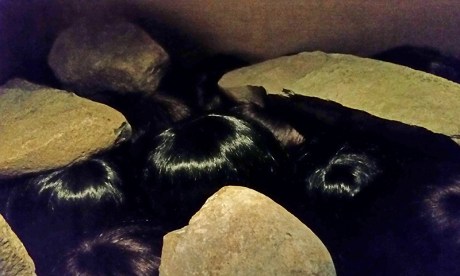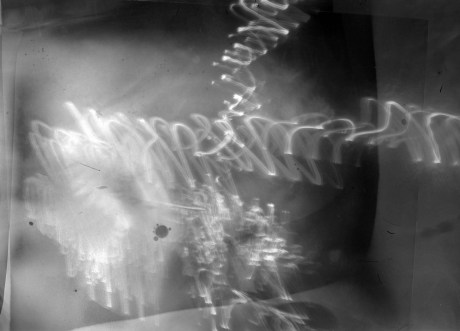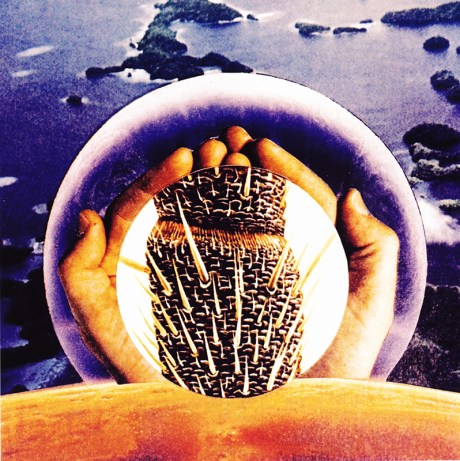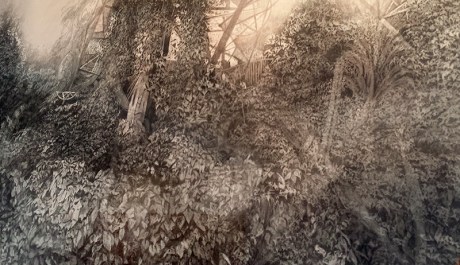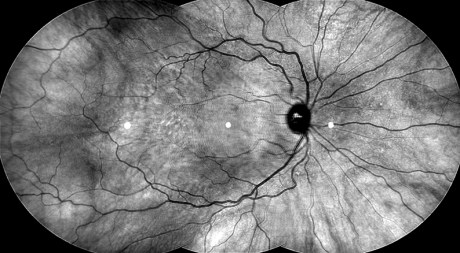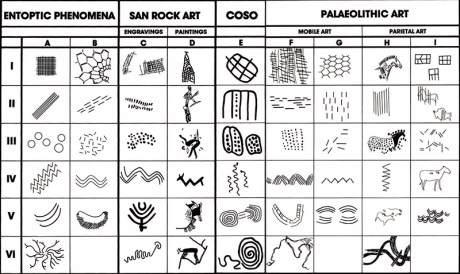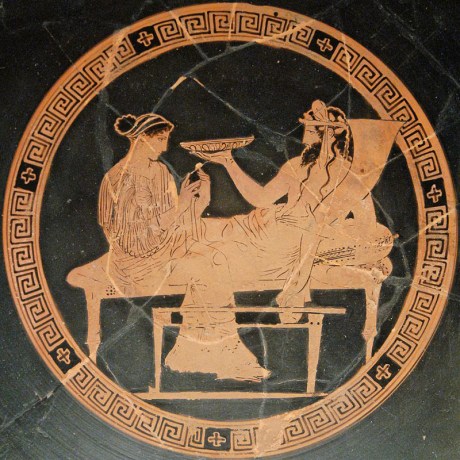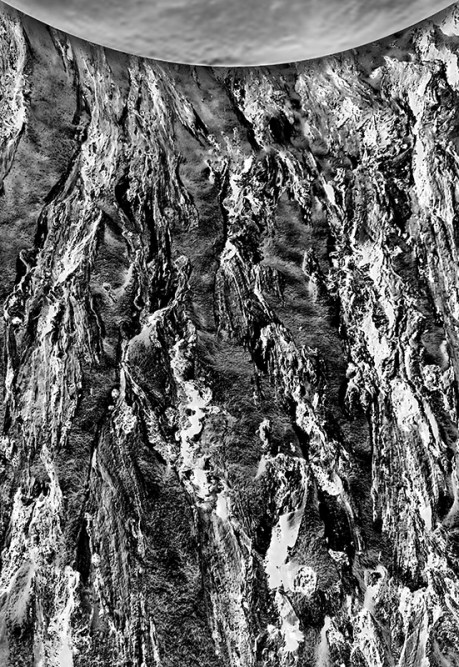The end of summer. Time for Laboratory of Dark Matters take down at Cleveland Ironstone Mining Museum.
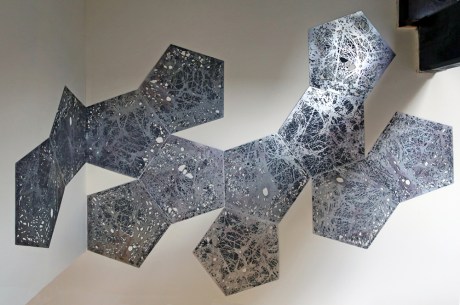
During the six week exhibition and many trips to the north east where we were made so welcome I became very fond of all those involved at the museum and the dramatic backdrop of the North Yorkshire coastline. Sad to pack the work away and leave.

Boulby Mine became a familiar sight and distinct reminder of the surreal journey underground and project conception over a year ago.
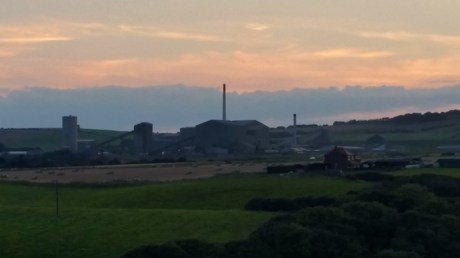
It was a genuine coming together of disciplines and communities which I think we all gained from. Pinning my hopes for the future on similar undertakings.

We are better together.
Straight onto making new work for Deptford X Fringe show Supposedly Predictable Phenomena with [ALLOY] artists.

Etching 12 plates, then screen printing the centre circles as 4 colour separations. The printed images are from crystal ball photographs taken out in the woods.
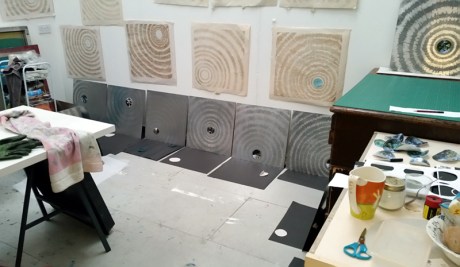
A portal for the imagination as well as a folding in of space.
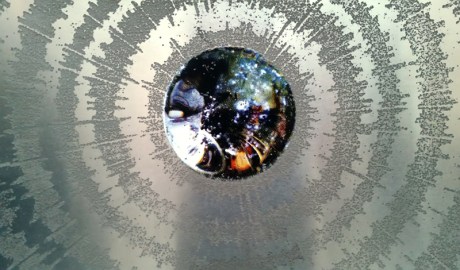
Meanwhile I was invited by The Institute of Physics to speak at the INTERACT conference in Birmingham. I was able to participate in some interesting workshops alongside the physicists and listen to Jim Al-Khalili and Alice Roberts in conversation about the shifting perspective of the academic world in relation to public outreach and the role of women in the sciences.
I was introduced to The Planeterrella, an incredible artificial demonstration of the Northern Lights. The aurorae are created by charged particles from the Sun travelling along the Earth’s magnetic field lines and exciting our atmosphere.

In this experiment most of the air is sucked out of a glass chamber to recreate the conditions about 100km up in the Earth’s atmosphere. The large sphere represents the sun and the small sphere the Earth which contains a very strong magnet to represent its magnetic field. A voltage is sent from the Sun to the Earth to recreate the solar wind which excites the electrons in the field enough to give off light at characteristic frequencies.

Listened to Gravitational Waves

and picked up a useful leaflet on cosmic rays which were first discovered by Victor Hess in 1912 using an electroscope to measure ionising radiation in the atmosphere 5300 metres up in a hot air balloon. The higher up the higher the radiation therefore the effect must be caused by something extra-terrestrial.

One high energy primary cosmic ray gives rise to a cascading shower of secondary particles that scatter across the earth, colliding and decaying in a constant stream. Mostly passing straight through us and the matter around us but sometimes there will be a direct hit at a subatomic level from a particle having travelled from outside our galaxy. 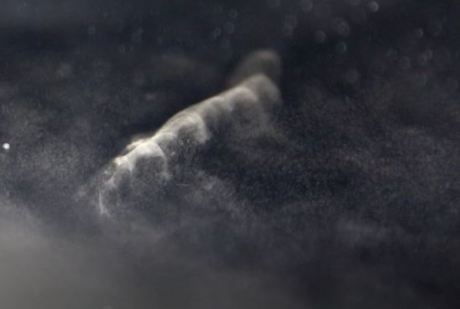
Lizzie Cannon ‘Liminal Matter’ at The University of Greenwich explored the constantly shifting dynamic of the shore and its material. Through the process of art-making, critical reflection and dialogue; this exhibition continues Lizzie’s research to address questions around human and nonhuman agency, temporal and spatial flows of matter and meaning, and an ontological fluidity that allows for an understanding of materiality as a reciprocal and generative relationship between humans and environment.

Lizzie Cannon detail of the mighty In transition
Wandered the set at South London Gallery of Tom Phillips IRMA: An Opera Opus XIIB. This 1969 mini opera was drawn from Tom Phillips magnum opus which was in turn born from an idea that he would alter every page of the first book he came across for 3d. W H Mallock’s 1892 novel A Human Document thus became A Humument.

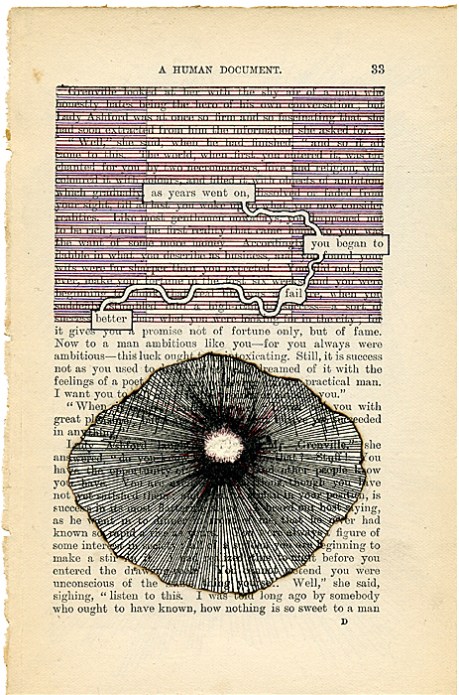
Further wanderings during London Open House weekend led to the architectural hybrid of Lloyd’s Register.

Hidden within the Richard Rogers glass and steel is Collcutt’s palazzo with grand marble staircase leading to the ornate General Committee Landing dominated by The Spirit of Maritime Commerce

and the bronze frieze sculpted by Frank Lynn Jenkins, inlaid with silver, mother of pearl, turquoise, coral and pearl.
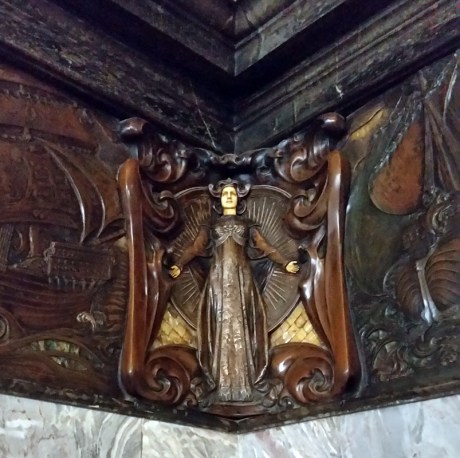

The landing opens onto the Italianate opulence of general committee room with its barrel vaulted ceiling and more exposed left breasts of various symbolic maidens

Lloyd’s Register was founded in 1760 in Lloyd’s Coffee House as a means of registering the seaworthiness of wooden commercial ships sailing from British ports. An attempt to plan and predict.
A tight turnaround from ideas, to making work, to installation of Supposedly Predictable Phenomena at no format Gallery in time for Deptford X.
Very happy to be showing alongside Jessie Sheffield and Lauren Ilsley. 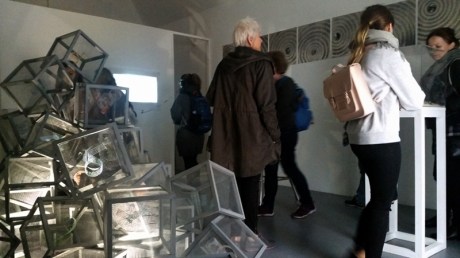
This was new work that investigates the themes of sequence and consequence

Contained Nascent
Acrylic, wood, water, powdered minerals.
Lauren Ilsley, 2017
Apparently linear processes, psychological and physical, are rendered unpredictable and essentially chaotic due to their inherent and entangled sensitivity.
‘Supposedly predictable phenomena’ relates to the concept that if all contributing factors could be mapped and understood, then the outcome, theoretically, should be predictable.
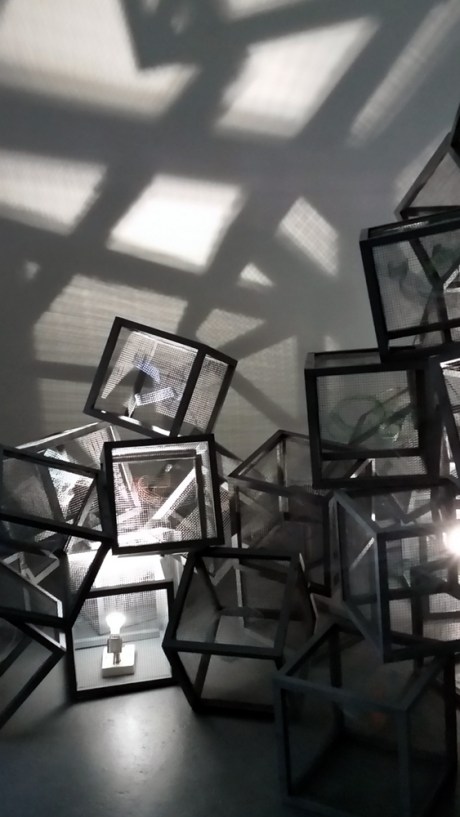
FixPoint 36
Steel mesh, wood, acrylic.
Jessie Sheffield, 2017
The results of this is a calculable universe and suggests a trajectory that is not only logical but also predetermined.

Tools for Transition
Ceramic, aluminium, wood.
Lauren Ilsley, 2017
This raises the question of the alternative – Chaos Theory, and in turn free will.

Duodecimēns
Etched aluminium, screen print. 12 pieces.
Susan Eyre, 2017
Duodeci – 12 mēns – minds……or Twelve thoughts, one from each multiverse

no format gallery space worked well for us, if slightly on the edge of the festival bounds. It faces onto Propeller Foundry with 4 floors of artist studios many of which invoke studio envy with their big windows and vast spaces. Found a few old friends in here. There was some opportunity to head out to see some of the other work on show around Deptford.
Ambient Occlusion was another excellent curation at Gossamer Fog. Muted as the first step towards the synthesis of human and computer, the attraction of virtual reality evident by the queues to experience Jakob Kudsk Steensen’s Terractic Animism. It was terrific. Hyper-real. Which cannot be conveyed in this image or the Vimeo link demo.

Other mesmerising work was Alan Warburton’s 3 channel video Primitives

and Katriona Beales video with mixed media Working Table II

Bearspace was showing Bella Easton Breath
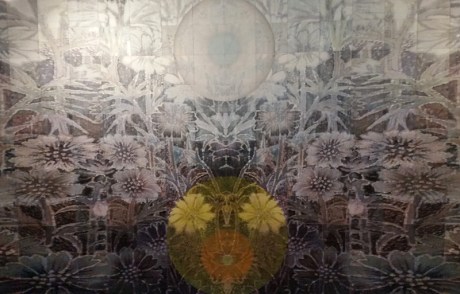
colours slipping from muted to monochrome, an enveloping tangle pieced from oil painted linen still scented with the mediums of its construction.
In the bare bones of St Paul’s House Tom Ireland placed three screens showing voyages across the sea or the galaxies. The Heavens (Deptford Observatory) places the local dockyards and observatory at the centre of the universe from which we embark.
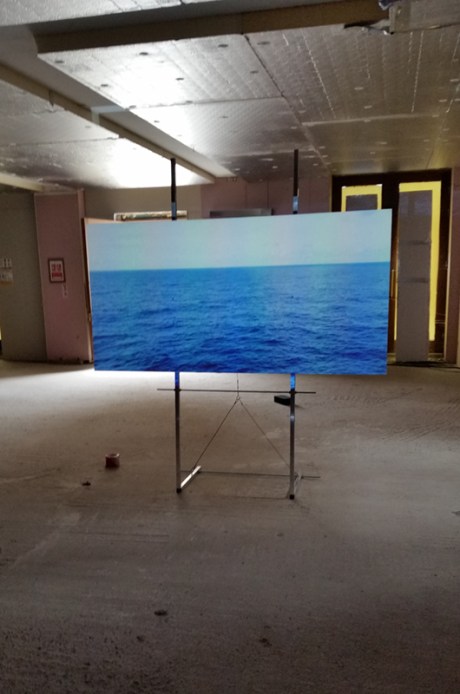
New Scientist Live 2017

Best thing I saw in some ways was these extraordinary fanged tubes of flesh that hold the clues to longevity but I did feel for them being thrust under the spotlight. Exposed. Naked indeed.









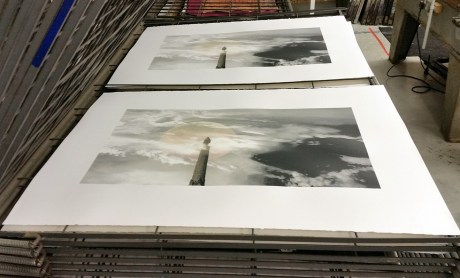
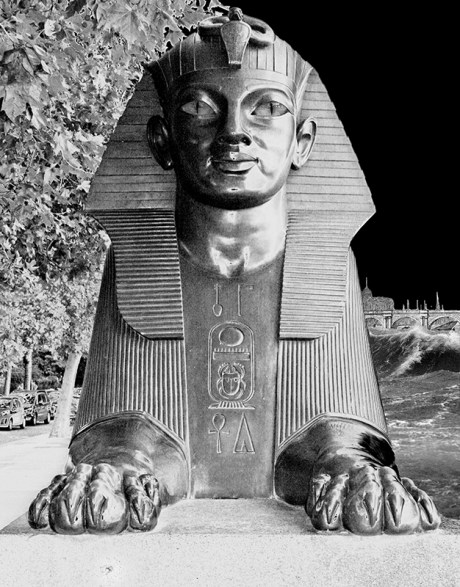
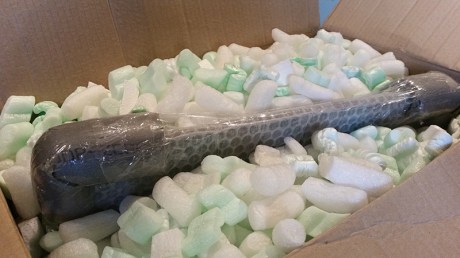







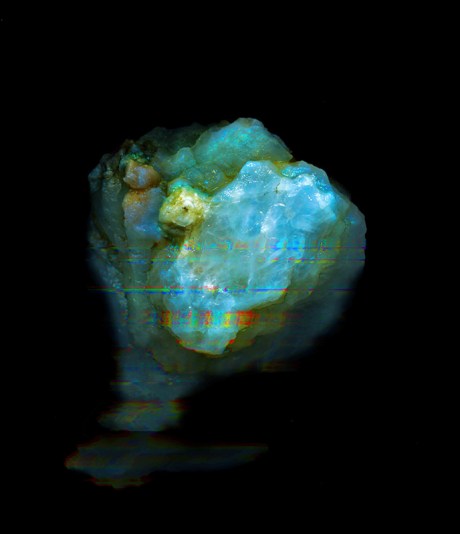
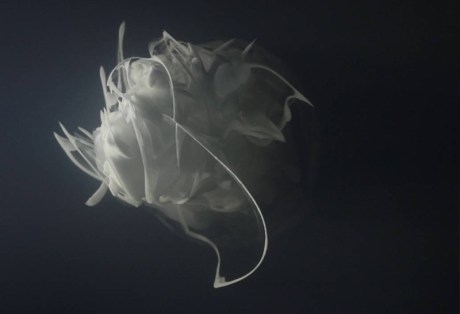

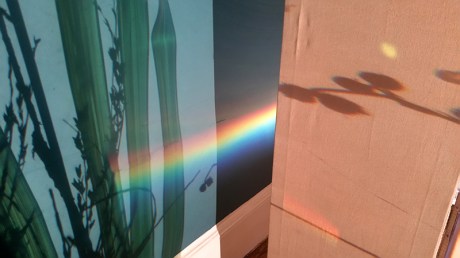
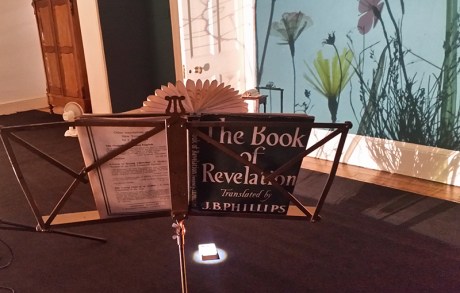



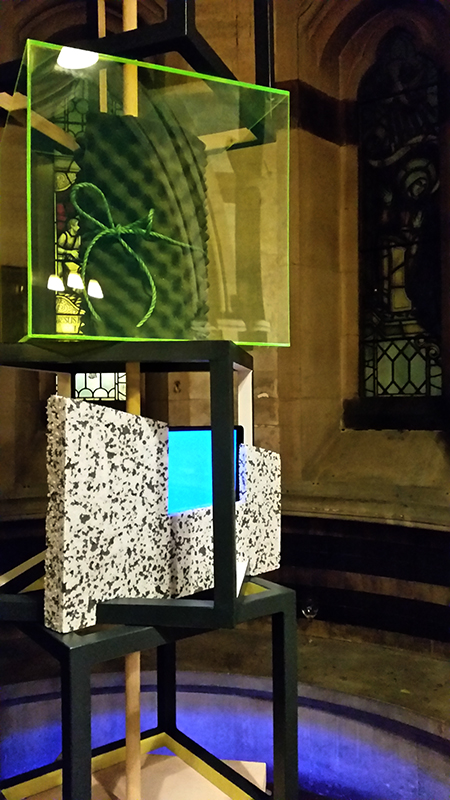

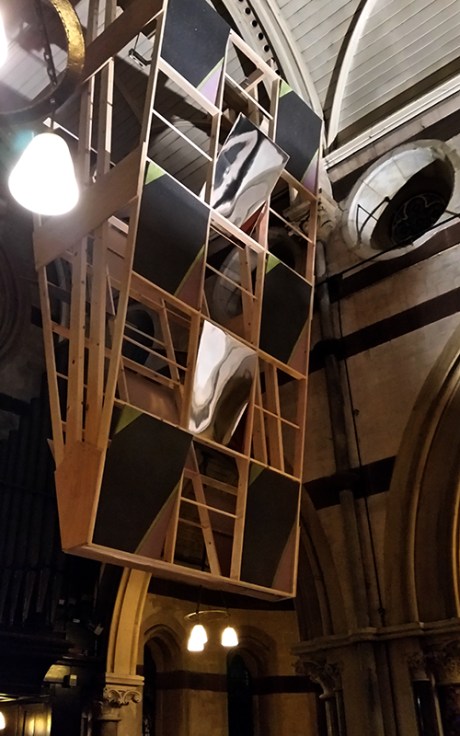

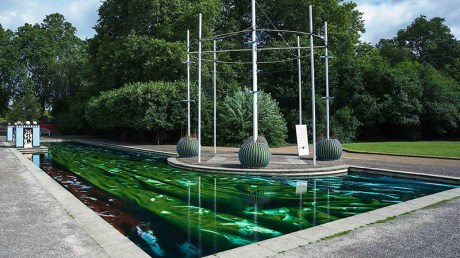
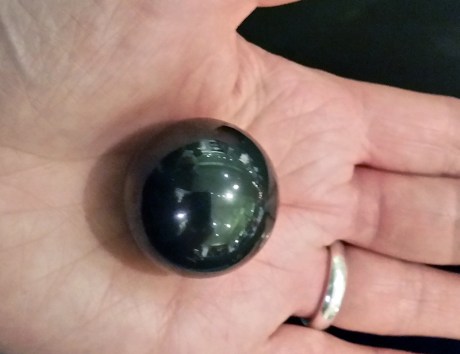 I liked the relationship struck between that of the magician as performer and the idea that the materials themselves are performing.
I liked the relationship struck between that of the magician as performer and the idea that the materials themselves are performing.



